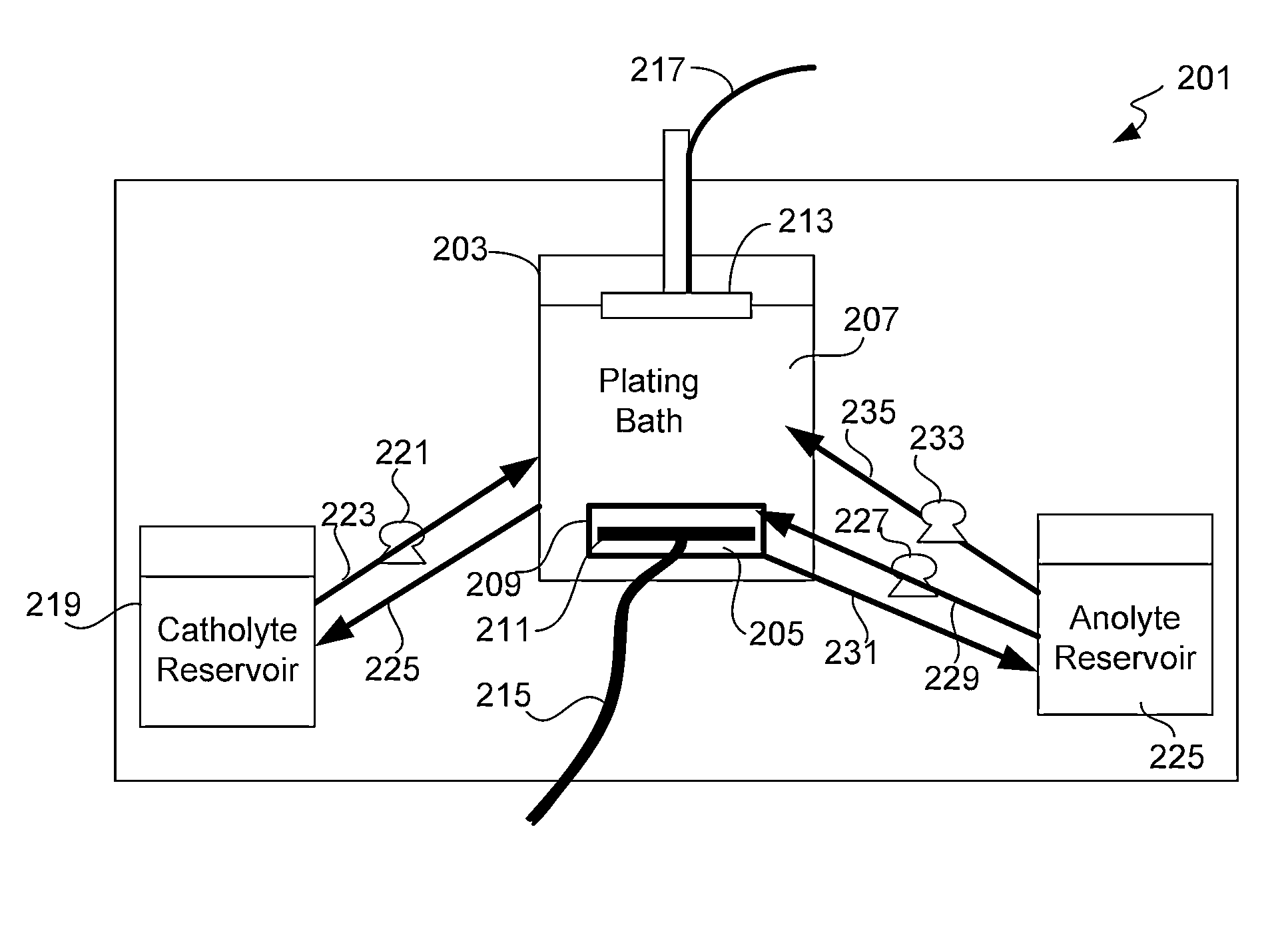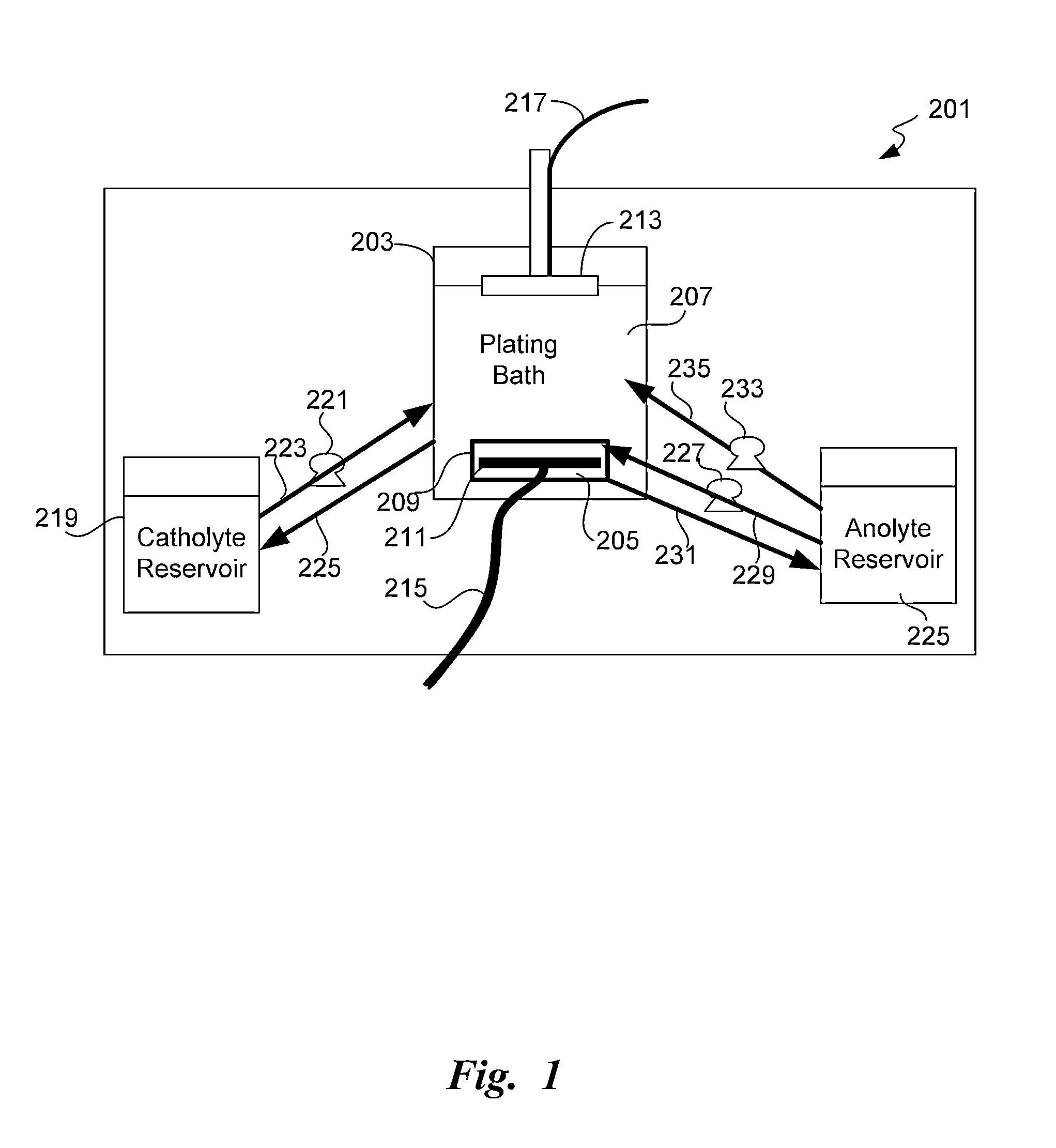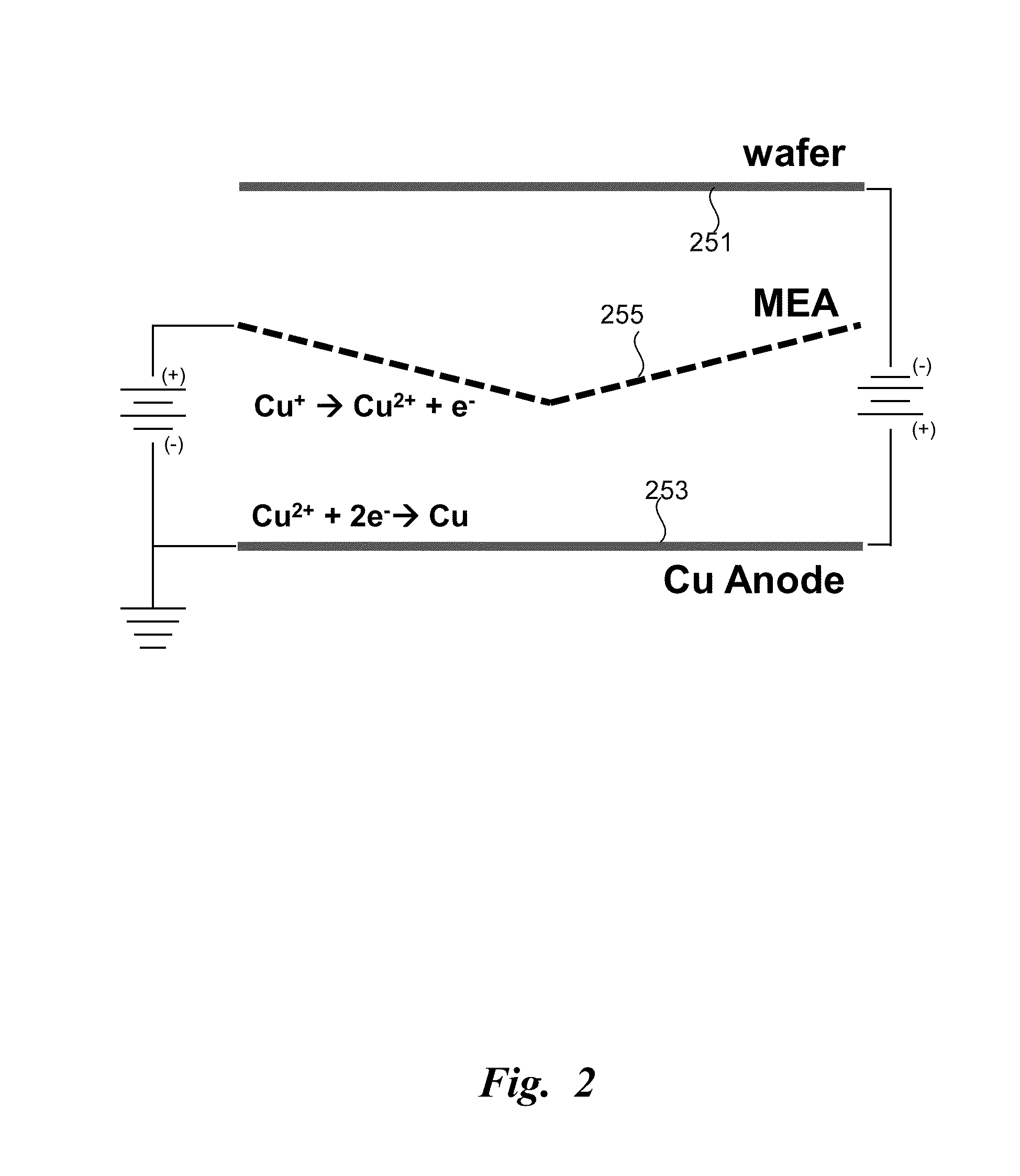Method and apparatus for electroplating semiconductor wafer when controlling cations in electrolyte
a technology of electrolyte and electrolyte, which is applied in the direction of coatings, electrolysis components, electrolysis processes, etc., can solve the problems of increasing the defect count, slow/no fill rate of patterned features, and reducing fill rates, so as to reduce the generation of chemical waste, reduce the degradation of organic additives, and improve the stability/longevity of plating solutions
- Summary
- Abstract
- Description
- Claims
- Application Information
AI Technical Summary
Benefits of technology
Problems solved by technology
Method used
Image
Examples
Embodiment Construction
[0046]In the following detailed description, numerous specific implementations are set forth in order to provide a thorough understanding of the disclosed implementations. However, as will be apparent to those of ordinary skill in the art, the disclosed implementations may be practiced without these specific details or by using alternate elements or processes. In other instances well-known processes, procedures, and components have not been described in detail so as not to unnecessarily obscure aspects of the disclosed implementations.
[0047]In this application, the terms “semiconductor wafer,”“wafer,”“substrate,”“wafer substrate,” and “partially fabricated integrated circuit” are used interchangeably. One of ordinary skill in the art would understand that the term “partially fabricated integrated circuit” can refer to a silicon wafer during any of many stages of integrated circuit fabrication thereon. The following detailed description assumes the disclosed implementations are imple...
PUM
| Property | Measurement | Unit |
|---|---|---|
| thickness | aaaaa | aaaaa |
| temperature | aaaaa | aaaaa |
| temperature | aaaaa | aaaaa |
Abstract
Description
Claims
Application Information
 Login to View More
Login to View More - R&D
- Intellectual Property
- Life Sciences
- Materials
- Tech Scout
- Unparalleled Data Quality
- Higher Quality Content
- 60% Fewer Hallucinations
Browse by: Latest US Patents, China's latest patents, Technical Efficacy Thesaurus, Application Domain, Technology Topic, Popular Technical Reports.
© 2025 PatSnap. All rights reserved.Legal|Privacy policy|Modern Slavery Act Transparency Statement|Sitemap|About US| Contact US: help@patsnap.com



